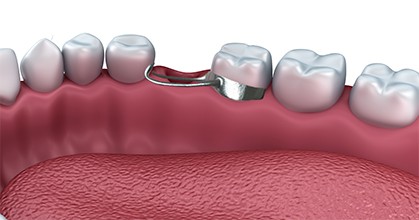Space Maintainers
Kids Dentist Kent

Although it’s normal for baby teeth to fall out, occasionally a youngster may do so before their adult teeth are prepared to erupt. Even while it might not seem like a huge issue right now, if it is not maintained properly, it can cause more issues. Your child’s mouth can be fitted with devices called space maintainers by a dentist to ensure that the adult teeth erupt properly.
You should arrange to see your child’s pediatric dentist if your child has lost a tooth too soon. Your child’s mouth and tooth structure can be examined, and they can then determine whether your youngster need a space maintainer.
What is a Space Maintainer
After baby teeth are lost early, dental space maintainers are tools used to keep adequate space free for permanent teeth to erupt. Even though it might not seem like a major deal at first, ignoring a gap can result in costly issues later on.
Premature loss of infant teeth can occur for a variety of causes, such as trauma, congenital problems, accidents, or decay. Your child’s specific situation will determine which kind of space maintainer your dentist suggests.
What Are the Different Types of Space Maintainers?
There are two basic sorts of pediatric space maintainers, and there are other types of maintainers within each of these categories.
Fixed
A semi-permanent tooth fixture known as a fixed space maintainer generally preserves enough room free for the adult tooth to erupt. The maintainer can be taken out once the permanent tooth has erupted.
Your child’s teeth can be cared for by a pediatric dentist using one of four types of fixed space maintainers. Crown and loop, distal shoe, lingual, and unilateral are the many forms.
Crown and Loop
One tooth is covered with a crown, and a stainless steel wire loop is also part of this apparatus. The loop maintains the gap open by pressing against the tooth on the other side. The crown can be taken off once the new tooth has fully erupted.
Distal Shoe
Only permanent first molars that haven’t fully erupted are fitted with this kind of maintainer. The disadvantage is that your child’s dentist will need to give these maintainers more time and care.
After a baby molar falls out too soon, these maintainers are typically placed beneath the gum line. The unerupted adult molar is then guided by the device as it grows in. If your child requires this kind of maintainer, you’ll need to arrange for regular check-ups to ensure the treatment is effective.
Lingual
TThese maintainers maintain space across several tooth gaps using wire and crowns.
Unilateral
Similar to a crown and loop procedure, this treatment maintains space between two teeth using a wire. The teeth on either side of the gap are wrapped with a wire by unilateral maintainers, though.
Removable
If your child’s tooth is about ready to erupt, a removable space maintainer can be a wise choice. These tools, which may be adjusted to your child’s demands, are comparable to those used in orthodontic treatments.
These items are typically composed of acrylic and can be fitted with a false tooth. Additionally, these maintainers make it simpler for your kid to continue healthy oral hygiene practices like brushing and flossing.
However, compared to fixed devices, portable ones are typically less good at preserving space.
Are Space Maintainers Really Necessary?
Setting aside room for the adult tooth is one of a baby tooth’s crucial roles. If a baby tooth is lost too soon, the empty gap it leaves behind could tilt adult teeth when they erupt.
The body often does an excellent job of keeping enough room, but each situation is unique. The needs of your child should be discussed with a pediatric dentist if they have lost a tooth too soon.

